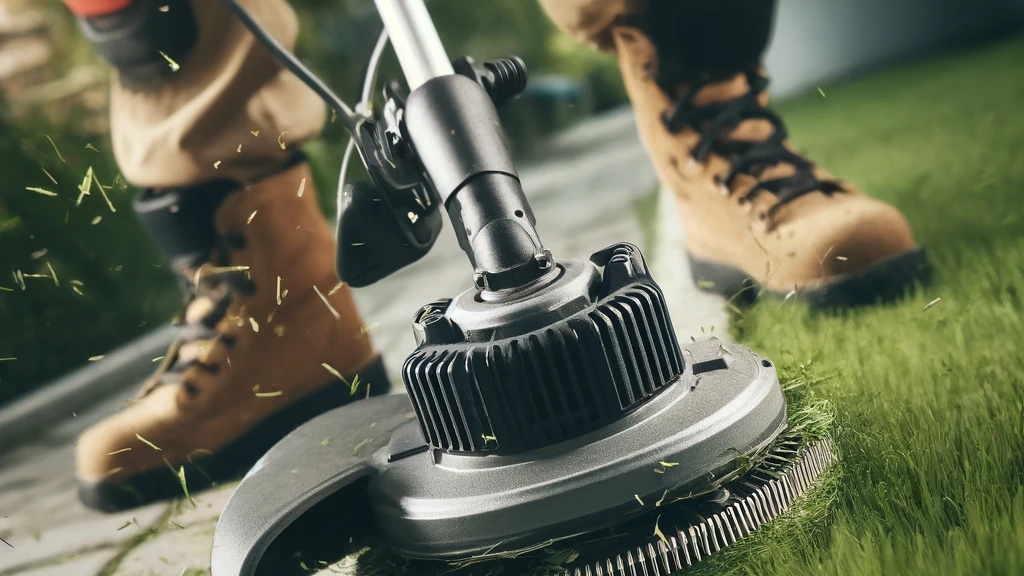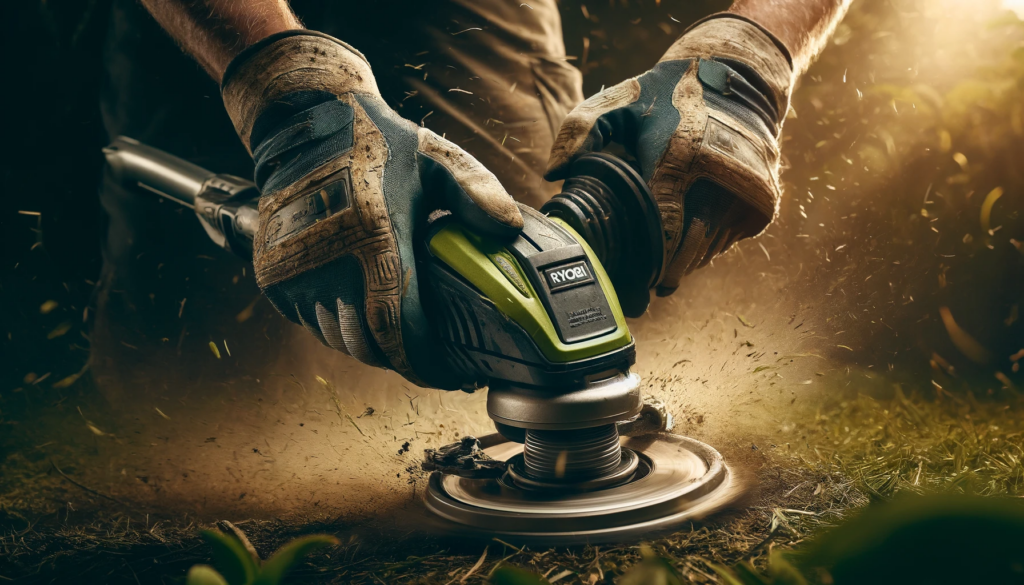Using a string trimmer like a pro isn’t just about turning it on and going to town on your lawn. It requires understanding the tool’s mechanics, adopting the right techniques, and maintaining a safe environment. This guide will walk you through how to use your string trimmer effectively, ensuring your lawn looks manicured and pristine. For a deeper understanding, explore how to remove a Ryobi string trimmer head for maintenance tips.
Understanding String Trimmer Rotation

The direction in which your string trimmer head spins is crucial for a clean cut and safety. For right-handed users, a counterclockwise rotation ejects debris away from you, making it ideal for walking along fences or curbs without the mess doubling back on your path. Conversely, left-handed users will find a clockwise rotation beneficial, as it directs debris to the right, keeping your work area clean.
String Trimmer Cutting Techniques
Trimming
The basic motion for trimming is holding your trimmer at a slight angle and moving it side-to-side. This technique is intuitive but requires a bit of finesse to avoid scalping your lawn. Learn more about choosing the right models in our best electric weed eaters guide.
Tapering
Tapering involves angling the string slightly downward as you approach an object, like a pool fence, creating a smooth, aesthetically pleasing transition from grass to barrier. Learn more about creating perfect edges with tapering in this comprehensive guide.
Edging
For a neat and tidy yard, edging along driveways and sidewalks is key. This technique requires holding the trimmer head perpendicular to the ground for sharp, clean lines to keep your lawn looking professional.
Screeding
Screeding is useful for eliminating weeds in cracks, requiring a gentle touch to avoid damaging the trimmer line against hard surfaces. This technique will improve the overall landscaping of your front yard.
Scything
Scything is perfect for tall grass and involves a ‘U’ motion with the trimmer, overlapping each pass for an even cut. Consider the benefits of different blade types by exploring the difference between high-lift and mulching blades.
Safety Precautions When Using Your Trimmer
Safety should never be an afterthought when using a string trimmer. Always wear protective gear, including eye protection, long pants, and gloves. Ensure no bystanders are near your work area, and always be mindful of where debris is ejected. Check out what else a leaf blower can accomplish for complementary tools.
The Debate: Straight Shaft vs. Curved Shaft
Choosing between a straight shaft and a curved shaft string trimmer boils down to personal preference and the task at hand. Straight shaft trimmers are preferred by professionals for their versatility and ease of use under obstacles. Curved shaft trimmers, however, tend to be more user-friendly due to their compact size. Whichever you choose, ensure it’s the best fit for your landscaping needs.
Choosing the Right Trimmer Line
The type of line you use can greatly impact your trimming efficiency. .065 is great for light work, while .080 and .095 cater to medium and heavy-duty tasks, respectively. Selecting the correct line thickness is crucial for achieving professional results. Discover the perfect line for your needs here.
Summing It Up: Trimming Grass Like a Pro

Becoming proficient with a string trimmer is about more than just practice; it’s about using the right techniques, understanding your equipment, and always prioritizing safety. With the right approach, you can achieve that professional landscaped look on your own lawn.
For further reading on lawn care and maintenance, explore a variety of resources and guides at Lawn Care Basics and dive deeper into the world of lawn mowers and tractors here. Whether you’re dealing with leaves or considering an upgrade to an electric pressure washer, your journey to a perfect lawn starts with the right knowledge and tools.
Remember, mastering a string trimmer takes time and practice. But with the right techniques and safety measures in place, you’ll be trimming like a pro in no time. Check out similar lawn mowers:

